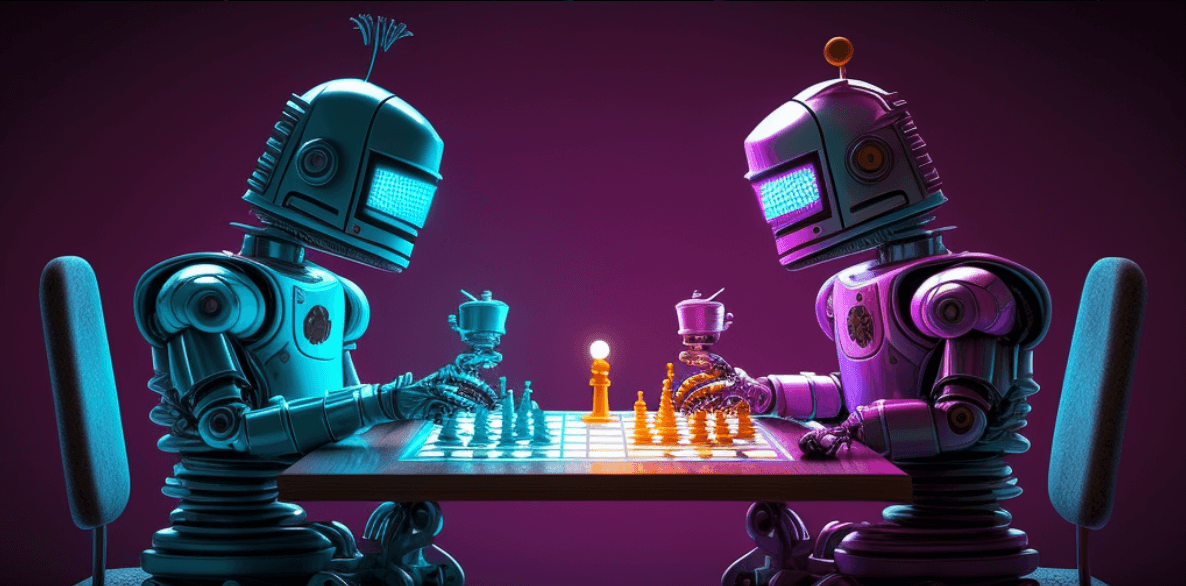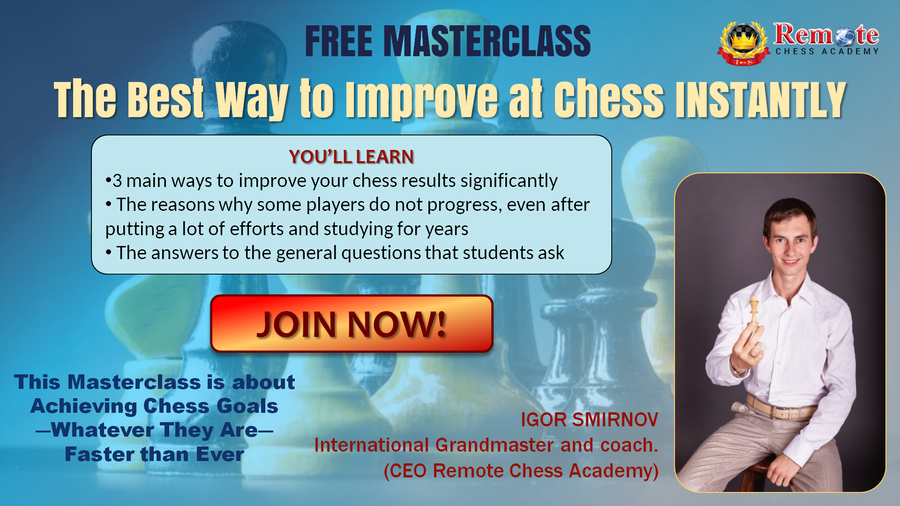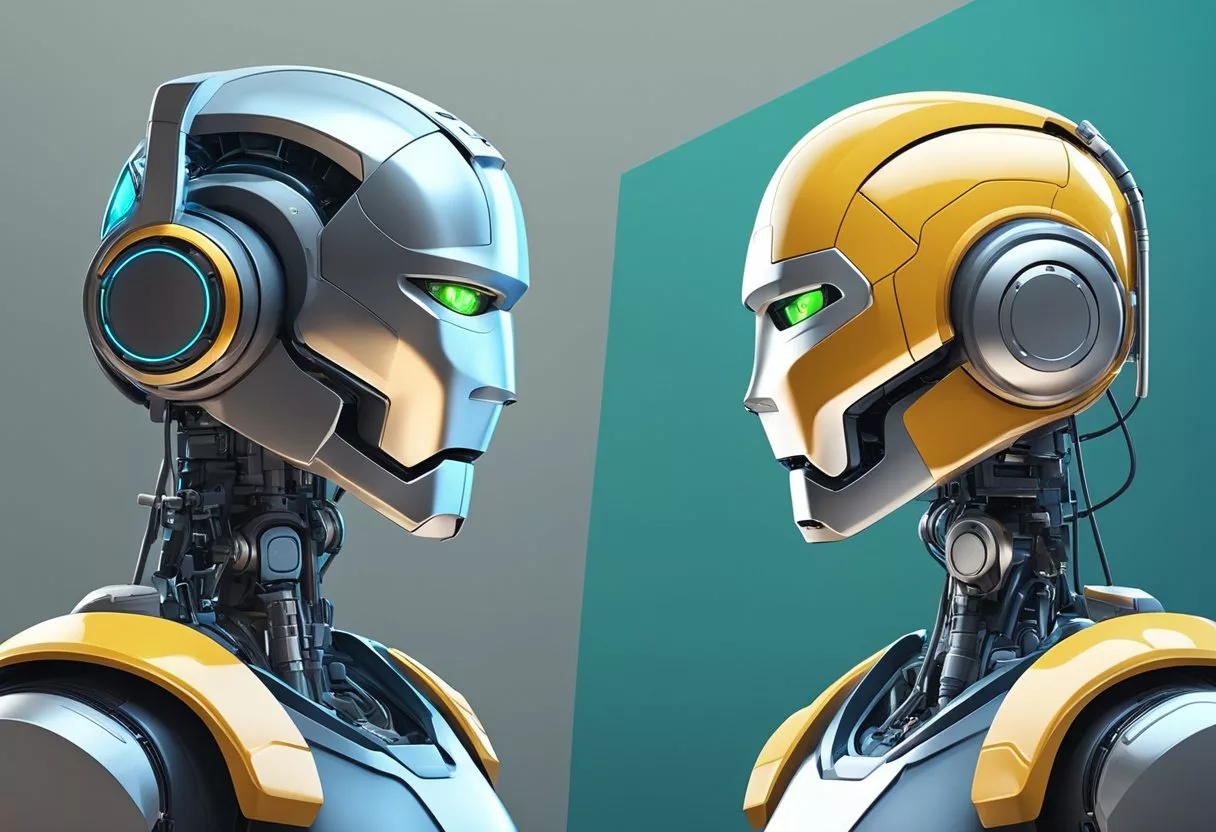You’re sitting at your desk, pondering over your recent chess games. You’ve been practicing hard, trying to improve your skills, but you’re not quite seeing the progress you’d hoped for. You’re feeling a bit stuck, unsure of how to level up your game and break through that frustrating plateau. That’s when you discover ChatGPT and decide to give it a shot.
As you begin to use ChatGPT, you find it’s a knowledgeable chess companion that can help you analyze your games, teach you essential strategies, and provide personalized guidance. It’s like having your own chess coach available 24/7, right at your fingertips.
Soon enough, you’re practicing with ChatGPT by your side, and you start to see improvements in your understanding of chess positions, tactics, and strategies.
You feel more confident in your games, and that once-distant dream of becoming a stronger chess player is now within reach.
Is this true? Let’s take it step-by-step.
For Beginners
Alright, let’s assume you’ve got a grasp on the basic stuff like how chess pieces move, their roles, and setting up the chessboard. So let’s get into it.
But hey, if you’re an absolute beginner or just want to go back to square one and learn the fundamentals properly, no worries! Just scroll down to the green box further down the page, and we’ll show you how ChatGPT can help you learn chess from scratch. Then come back here to continue your reading journey.
Gaining Insight into basic Tactics and Strategies with ChatGPT
1. The opening
When you’re starting out, learning the general opening principles is crucial for building a strong foundation. With ChatGPT, you can easily grasp these concepts, and here are some examples to show you how. You can then use these ideas for any other concept you’re trying to learn
Control the center
In the opening, it’s important to control the center of the board (d4, d5, e4, e5 squares) as it gives your pieces more mobility and flexibility.
“What are some opening moves that help control the center for White?”
“How can I fight for central control when playing as Black?”
ChatGPT can suggest moves like 1.e4 or 1.d4 for White, and similarly, 1…e5 or 1…d5 for Black, to help you achieve that central control.
You can then dig deeper with questions like
Examples of follow-up chess Prompts you could use
- “What are the main ideas and plans behind playing 1.e4 or 1.d4 as White, and how do they influence the game’s direction?”
- “How do opening choices like 1…e5 or 1…d5 for Black respond to White’s central control, and what are the typical strategies associated with each?”
Develop your pieces
Getting your knights and bishops out and active is key. ChatGPT can guide you on how to develop them effectively. For instance, it might recommend moves like Nf3 and Nc3 for the knights and Bc4 or Bb5 for the bishops, ensuring your pieces work harmoniously.
“What’s the best way to develop my knights in the opening phase?”
“How should I position my bishops to maximize their effectiveness early in the game?”
You can then dig deeper with questions like
Examples of follow up chess Prompts you could use
- “Can you provide examples of common knight development patterns in popular openings?”
- “What are some typical opening lines that demonstrate effective bishop placement?”
Avoid unnecessary pawn moves
Moving too many pawns in the opening can slow down your development and create weaknesses. ChatGPT can remind you to limit pawn moves and focus on piece development instead. You’ll learn to avoid overextending your pawn structure and keep your position solid.
“Why is it important not to move too many pawns in the opening?”
“Can you give me an example of a game where excessive pawn moves led to weaknesses?”
You can then dig deeper with questions like
Examples of follow up chess Prompts you could use
- “What are the potential consequences of making too many pawn moves in the opening?”
- “Could you analyze a famous game that highlights the dangers of excessive pawn moves?”
Castle early
Castling is an essential move that not only keeps your king safe but also connects your rooks. The AI can help you decide when to castle and choose between kingside or queenside castling, depending on your position and strategy.
“When is the right time to castle in a chess game?”
“How do I decide whether to castle kingside or queenside?”
Examples of follow-up chess Prompts you could use
- “What factors should I consider when determining the right moment to castle?”
- “Can you explain the pros and cons of kingside and queenside castling in different opening systems?”
Don’t move the same piece multiple times
In the opening, it’s generally better to develop all your pieces rather than moving the same one multiple times. ChatGPT can teach you how to coordinate your pieces efficiently, making sure each one is contributing to your overall game plan.
“Why should I avoid moving the same piece multiple times in the opening?”
“Can you show me an example of efficient piece coordination in the opening phase?”
You can then dig deeper with questions like
Examples of follow-up chess Prompts you could use
- “What problems can arise from moving the same piece too often in the opening?”
- “Can you analyze a game where a player efficiently developed their pieces without moving the same piece multiple times?”
Affiliate/Sponsored Link
Prefer a visual experience: chess.com offers access to interactive lessons and guided courses on various chess topics for players of all levels click here
You can also improve your tactical skills with an extensive selection of puzzles tailored to your level click here
2. Common tactical motifs
Tactics are the building blocks of a winning game, and they come in many forms, such as forks, pins, and skewers. ChatGPT can explain each of these motifs and give you examples of how they work.
For instance, you might ask:
“What’s a fork in chess?”
ChatGPT will break down this powerful tactic, where one piece attacks two or more enemy pieces simultaneously.
Examples of other chess Prompts you could use
- “What is a discovered attack, and can you show me a famous example?”
- “How do I execute a skewer tactic in chess?”
- “What are some common tactics involving knights?”
- “Can you explain the concept of deflection in chess and give an example?”
3. Key strategic concepts
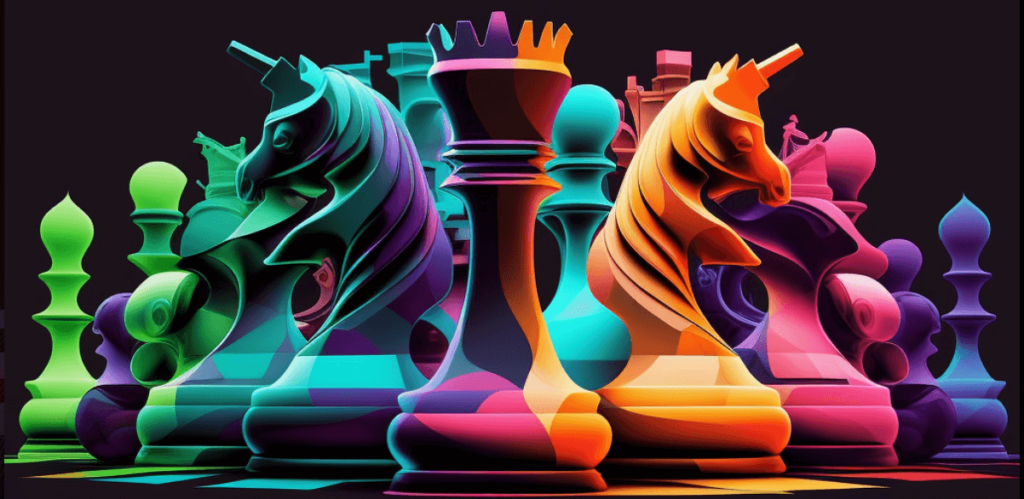
To excel at chess, you need to understand essential strategic concepts like outposts, weak squares, and pawn structure.
ChatGPT can help you identify these elements in your games and explain their importance.
Just ask something like:
“What’s the significance of pawn structure in chess?”
And you’ll get a detailed response on how pawn structure can impact your position and overall strategy.
Examples of other chess Prompts you could use
- “What is an outpost, and why is it important in chess?”
- “How can I identify and exploit weak squares in my opponent’s position?”
- “What are some common pawn structures, and how do they affect my strategy?”
- “Can you explain the principle of two weaknesses in chess?”
- “How do I decide when to exchange pieces and when to keep them on the board?”
4. Famous game case studies
One of the best ways to learn tactics and strategies is by analyzing famous games.
ChatGPT can walk you through some of the most iconic games in history, highlighting key moments and the thought process behind each move.
For example, you could ask:
“Can you analyze the game between Garry Kasparov and Deep Blue from 1997?”
And ChatGPT will provide an in-depth look at the game, showcasing the tactics and strategies used by both players.
Examples of other chess Prompts you could use
- “Can you analyze the famous game between Bobby Fischer and Boris Spassky from the 1972 World Championship?”
- “What can I learn from the game between Anatoly Karpov and Garry Kasparov in the 1985 World Championship?”
- “Please analyze the Evergreen Game played by Adolf Anderssen and Jean Dufresne in 1852.”
- “What tactics and strategies were used in the game between Mikhail Tal and Vasily Smyslov from the 1959 Candidates Tournament?”
- “Can you walk me through the game between Vishy Anand and Magnus Carlsen from the 2013 World Chess Championship?”
Interactive Learning with ChatGPT – your personalized coach
Now, let’s talk about one of the coolest aspects of learning chess with ChatGPT – interactive learning! With ChatGPT, you can simulate game scenarios, analyze your games, and solve puzzles interactively.
This hands-on approach will not only help you understand the concepts better but also make learning a whole lot more fun. Here’s how ChatGPT can help in these areas:
1. Simulating game scenarios and asking for guidance
ChatGPT can help you explore different game situations and provide guidance on the best moves or plans. For instance, you might describe a specific position and ask:
“What should I do in this situation?”
ChatGPT will then analyze the position and suggest moves or strategies that can give you an advantage. This interactive approach helps you understand the thought process behind each decision and apply it to your own games.
Examples of other chess Prompts you could use
- “I have my knight on d4 and my opponent’s queen on c5. What’s the best move to create a fork?”
- “In this position, should I focus on attacking my opponent’s king or improving my piece placement?”
- “My opponent has just played 1.e4. What’s a solid response for Black?”
- “How can I exploit a weak pawn structure in this given position?”
- “My king is exposed, and I’m under attack. How can I improve my king’s safety?”
2. Analyzing and discussing your own games
One of the most effective ways to improve your chess skills is by analyzing your own games. ChatGPT can be a great partner in this process.
Share a game you’ve played, and ChatGPT will provide feedback on key moments, highlighting both your strong moves and areas for improvement.
Just ask, “Can you analyze this game I played and give me some tips?” and ChatGPT will offer valuable insights to help you grow as a player.
Examples of other chess Prompts you could use
- “Can you help me understand the mistakes I made in this game and how to avoid them in the future?”
- “Where did I go wrong in my opening strategy in this game?”
- “How could I have better defended my position in this game?”
- “What were the critical moments in this game, and how could I have played them differently?”
- “Could you suggest an alternative plan for me to consider in this specific position from my game?”
3. Solving puzzles and problems interactively
ChatGPT can also present you with chess puzzles and problems to solve interactively.
This will help sharpen your tactical vision and reinforce your understanding of key concepts.
For example, you might ask:
“Can you give me a puzzle that involves a pin tactic?”
ChatGPT will then provide a puzzle, and you can work through it together, discussing each move and its implications.
Examples of other chess Prompts you could use
- “Can you give me a chess puzzle that features a knight fork?”
- “Could you provide a puzzle where I need to find a forced checkmate in three moves?”
- “Can you challenge me with a puzzle that demonstrates the power of a discovered attack?”
- “Please give me a puzzle that focuses on exploiting weak squares in the opponent’s position.”
- “Can you share a puzzle that requires me to use a deflection tactic to win material?”
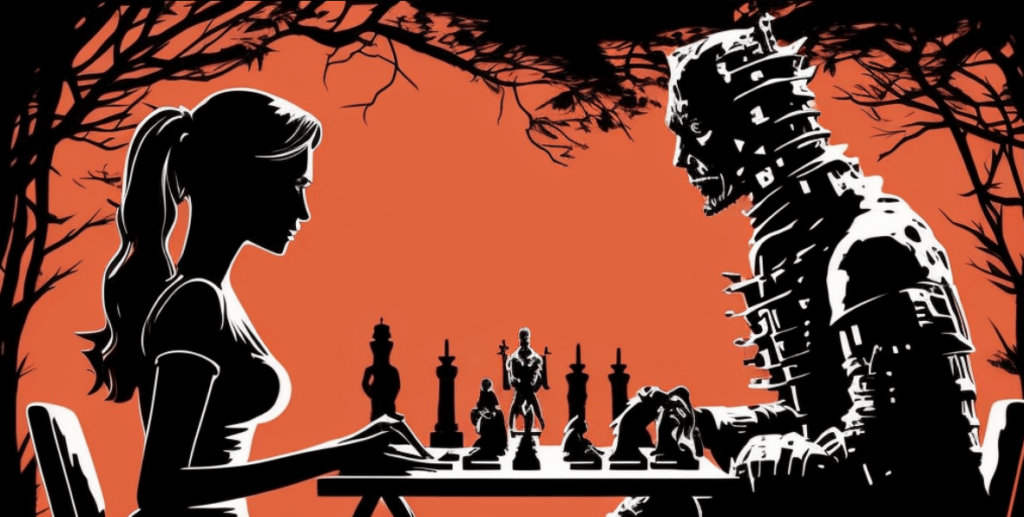
I am a total chess newbie can ChatGPT help me?
This section is for you if you’re starting out in chess, or just want to go back to square one and learn the fundamentals properly.
Here’s how ChatGPT can help:
Chess rules and regulations
If you want to learn the basic rules, such as how each piece moves and captures, or the concepts of check, checkmate, and stalemate. Just ask ChatGPT, and it’ll explain everything you need to know in a clear, easy-to-understand manner.
For example, you might ask, “How does the knight move?” and ChatGPT will explain the unique L-shaped movement pattern.
Understanding the chessboard and setup
Knowing how to properly set up the board is essential. ChatGPT can guide you through the process, making sure you place each piece in its correct starting position.
Just prompt it with something like, “How do I set up a chessboard?” and you’ll receive step-by-step instructions.
Recognizing the role of each chess piece
Each piece has its unique strengths and weaknesses, which can be leveraged to your advantage. ChatGPT can help you understand the value and role of each piece in the game.
For instance, ask “What’s the role of the queen in chess?” and you’ll get a detailed explanation of the queen’s importance and versatility.
Basic tactics and strategies
To improve your gameplay, it’s essential to learn fundamental tactics and strategies, like forks, pins, and discovered attacks. ChatGPT can provide examples and explanations for these concepts, so you’ll be better equipped to spot opportunities during your games.
You could ask, “How does a pin work in chess?” and ChatGPT will help you understand this powerful tactic.
Opening principles
As we discussed earlier, mastering general opening principles is vital for building a strong foundation. ChatGPT can provide guidance on key ideas like controlling the center, developing pieces, and castling.
However, we still recommend total beginners do a structured learning approach through a site such as chess.com.
Affiliate/Sponsored Link
Prefer a visual approach? Analyze your games using Chess.com’s built-in chess engine for optimal learning and performance click here
Or watch instructive video lessons from renowned chess masters click here
Intermediate Chess
Opening Theory
Let’s dive into the fascinating world of opening theory! Opening theory is an essential part of every chess player’s repertoire, and understanding popular chess openings can give you a strong foundation to build upon.
ChatGPT is here to help you explore and expand your knowledge of openings, whether you’re a beginner or an advanced player. Let’s see how ChatGPT can assist you in this area:
1. Overview of popular chess openings
ChatGPT can provide an overview of popular chess openings for players of all levels. For beginners, it can introduce openings like the Italian Game, the Ruy Lopez, and the Sicilian Defense. For more advanced players, it can delve into the complexities of the Grünfeld Defense, the Nimzo-Indian Defense, or the King’s Indian Defense, among others.
Just ask, “What are some popular chess openings for beginners?” or “What are the main lines of the King’s Indian Defense?” and ChatGPT will guide you through the details.
Examples of other chess Prompts you could use
- “What are some beginner-friendly openings for White?”
- “Can you give me an overview of the Caro-Kann Defense?”
- “What are the main ideas behind the English Opening?”
- “How does the Queen’s Gambit differ from the King’s Gambit?”
- “What are the essential concepts in the Slav Defense?”
You may also like 📖
-
Study This: If You Want to Win ChatGPT Prompt Engineering Competitions
-
How to use ChatGPT to write a killer Resume in 7 steps
-
100 Ways to Use ChatGPT (With Prompts)
-
Does Elon Musk have Asperger’s (Autism) and the role in his Unconventional Thinking
-
Is Upgrading to ChatGPT 4 worth the cost? A Comprehensive Analysis vs. ChatGPT 3.5
-
ElevenLabs AI: Full Feature Review – Unveiling the Future of Voice Synthesis
2. Tailored opening recommendations
With ChatGPT, you can find opening recommendations that suit your playing style and skill level. Share your preferences or the type of positions you enjoy playing, and ChatGPT will suggest openings that align with your interests.
For example, you could ask, “What’s a good aggressive opening for White?” or “Can you recommend a solid and positional opening for Black?” and ChatGPT will provide options that cater to your desired playstyle.
Examples of other chess Prompts you could use
- “I like open positions with lots of tactics. What openings should I consider?”
- “What are some solid openings for Black against 1.e4?”
- “Can you recommend an offbeat opening that might surprise my opponents?”
- “What are some good openings for players who prefer quiet, positional games?”
- “Which chess openings are best suited for rapid or blitz games?”
3. In-depth analysis and discussion of specific opening lines
If you want to dive deeper into a specific opening, ChatGPT is more than happy to help. It can provide detailed analysis and discussion of particular opening lines, covering key ideas, typical plans, and common traps.
You might ask, “Can you explain the main ideas behind the French Defense?” or “What are the key traps in the Sicilian Dragon Variation?” and ChatGPT will provide you with valuable insights and explanations.
Examples of other Prompts you could use
- “Could you explain the key ideas in the Accelerated Dragon Variation of the Sicilian Defense?”
- “What are the main plans and strategies in the Catalan Opening?”
- “Can you provide an in-depth analysis of the Benko Gambit?”
- “What are the critical lines in the Vienna Game and how should Black respond?”
- “How can I effectively counter the London System as Black?”
Exploring opening theory with ChatGPT is an engaging and effective way to broaden your chess repertoire and gain a better understanding of the early stages of the game. So, go ahead and dive into the world of openings and let ChatGPT guide you along the way!
Improving Endgame Skills
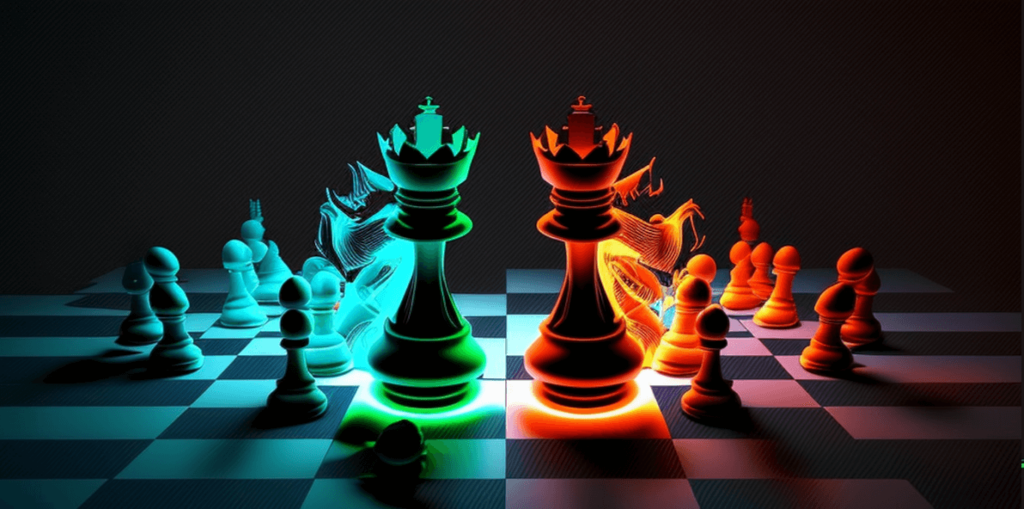
Here’s how ChatGPT can help you enhance your endgame abilities:
1. Explanation of basic endgame principles
ChatGPT can explain the fundamental endgame principles that every chess player should know. From king and pawn endings to the opposition concept and the square of the pawn, ChatGPT has you covered.
Just ask, “What are some essential endgame principles in chess?” or “How does the opposition work in king and pawn endings?” and ChatGPT will provide clear explanations to deepen your understanding.
Examples of other chess Prompts you could use
- “What is the concept of the square of the pawn in endgames?”
- “How can I use the principle of two weaknesses in endgames?”
- “What is the role of king activity in endgame positions?”
- “Can you explain the basic ideas behind pawn endgames?”
- “How do I use zugzwang effectively in endgame situations?”
2. Practicing common endgame scenarios
To truly master the endgame, you’ll need to practice various endgame scenarios. ChatGPT can help by guiding you through common situations and providing helpful tips.
You might ask, “Can you show me how to checkmate with a king and rook against a king?” or “How can I draw a game when I have only a king and a pawn against my opponent’s king and two pawns?”
ChatGPT will walk you through these scenarios step by step, ensuring you grasp the concepts and techniques involved.
Examples of other chess Prompts you could use
- “Can you guide me through the process of checkmating with two bishops against a king?”
- “How can I draw a game with a king and rook pawn against a king and a minor piece?”
- “What are the key ideas in rook and pawn versus rook endgames?”
- “Can you help me practice the Lucena position in rook and pawn endgames?”
- “How do I checkmate with a king and queen against a king?”
3. Analyzing endgame positions from real games
Another effective way to improve your endgame skills is by studying endgame positions from actual games.
ChatGPT can help you analyze these positions, highlighting important ideas and showing you how to handle similar situations in your own games.
Just say, “Can you analyze this endgame position from a game between Magnus Carlsen and Fabiano Caruana?” or “What should I have done differently in this endgame position from one of my games?” and ChatGPT will offer valuable insights and advice.
Examples of other chess Prompts you could use
- “Can you help me understand this endgame position from the 1972 World Chess Championship between Fischer and Spassky?”
- “What can I learn from the famous Capablanca vs. Tartakower endgame from 1924?”
- “Can you analyze this endgame position from a game I played in a recent tournament?”
- “What are the key ideas in this knight and pawn endgame position from a game between Karpov and Kasparov?”
- “How could I have improved my play in this bishop vs. knight endgame from one of my games?”
By using ChatGPT to hone your endgame skills, you’ll be better prepared to handle the final stages of your games with confidence and precision. So, roll up your sleeves and let ChatGPT guide you on your journey to endgame mastery!
A customized chess lesson plan – where ChatGPT really shines
Let’s say you’re looking to up your chess game, whether you’re a beginner aiming to reach an intermediate level, or an intermediate player striving to achieve mastery. ChatGPT can truly support your journey with personalized lesson plans tailored to your specific needs and goals.
You can use comprehensive prompts like these and see ChatGPT work its AI magic:
“Create a comprehensive chess lesson plan for a beginner aiming to become an intermediate player, covering all aspects of the game, including opening principles, tactics and strategies, endgame techniques, and practice routines. Please provide a detailed schedule, resources, and exercises to help me become a well-rounded chess player.”
“Design a complete chess lesson plan for an intermediate player striving to achieve mastery, encompassing advanced opening theory, tactical and strategic mastery, complex endgame studies, and game analysis and training. Please outline a structured plan, recommended study materials, and suggested practice methods to ensure my growth as a balanced and proficient chess player.”
Or you can target specific areas like the below:
Examples of other chess Prompts you could use
- Beginner Fundamentals: “Create a beginner to intermediate lesson plan focusing on chess fundamentals.”
- Beginner Opening Repertoire: “Help me develop a beginner-friendly opening repertoire.”
- Advanced Openings: “Design an intermediate to advanced lesson plan for deepening my opening knowledge.”
- Beginner Endgame: “Craft a lesson plan to improve my endgame skills as a beginner.”
- Intermediate Endgame Studies: “Craft a lesson plan to improve my endgame skills from intermediate to master level.”
- Tactical and Strategic Mastery: “Create a lesson plan to help me master advanced tactics and strategies.”
- Beginner Lesson plan: How should I structure my practice routine to improve from beginner to intermediate?”
- Intermediate Lesson plan: “How should I structure my practice routine to progress from intermediate to master level?”
Still Confused? Need a human to help you?
We recommend Remote Chess Academy’s International Grandmaster Igor Smirnov. Click here.

Or join chess.com’s clubs to connect with like-minded players and participate in club games and activities
We’ve included some affiliate links in this section to help you! If you happen to click on one and make a purchase, we might earn a small commission. But don’t worry, it won’t cost you any extra and it’s a great way to show some love for our site at the same time!
FAQs on Using ChatGPT to Master Chess
How can ChatGPT assist me in developing chess strategies?
Describe your current level, and ChatGPT can suggest tactics, openings, and mid-game strategies tailored to your chess journey. For instance, “I’m a beginner. What’s a simple chess opening to start with?”
Can I get insights from ChatGPT on famous historical chess matches?
Definitely! ChatGPT can provide analysis and key takeaways from iconic chess games played by grandmasters. Try: “Break down the 1972 World Chess Championship match for me.”
How can I leverage ChatGPT to improve my chess endgame?
ChatGPT can offer tips, techniques, and common scenarios to help you hone your endgame skills in chess. Ask, “What are essential endgame strategies in chess I should know?”
I struggle with certain chess openings. Can ChatGPT help?
Share the specific opening or position, and ChatGPT can guide you on understanding its intricacies and potential responses in chess. Prompt: “Explain the King’s Indian Defense to me.”
Can ChatGPT provide puzzles or challenges to enhance my chess skills?
Of course! ChatGPT can suggest chess puzzles or positions for you to solve, helping you sharpen your tactical vision. Dive in with: “Give me a challenging chess puzzle to solve.”
How can I use ChatGPT to study the styles of renowned chess players?
ChatGPT can offer insights into the playing styles, strengths, and notable games of chess legends. Ask, “Tell me about Garry Kasparov’s approach to chess.”
Can ChatGPT suggest resources or platforms for online chess practice?
Yes! ChatGPT can recommend websites, apps, and platforms where you can play, study, and further your chess skills. Example: “Which platforms are best for playing chess online against opponents?”
How can I stay updated on current chess tournaments and news using ChatGPT?
ChatGPT can point you to resources, websites, or publications to keep you in the loop about the latest in the chess world. Try: “Where can I follow live commentary on chess grandmaster tournaments?”
Can ChatGPT assist in preparing for a chess tournament I plan to participate in?
Certainly! ChatGPT can provide tips on mindset, opening preparation, and game analysis to ensure you’re well-prepared for your chess competition. Ask, “How should I prepare for my upcoming local chess championship?”
Conclusion and final thoughts
In conclusion, embracing the power of ChatGPT can aid your chess learning journey and propel you towards mastery. As an always-available tutor, ChatGPT offers a unique, personalized, and interactive learning experience, catering to your individual needs and preferences. It can help you grasp fundamental concepts, analyze games, practice tactics and strategies, and fine-tune your overall understanding of the game.
By incorporating ChatGPT into your regular training routine and supplementing it with other resources like books, videos, and online platforms such as Chess.com (or tutors like I GM Igor), you can create a comprehensive and engaging learning environment.
ChatGPT’s extensive capabilities and user-friendly approach make it an invaluable partner in your chess improvement journey, consistently providing insights, motivation, and tailored guidance.
